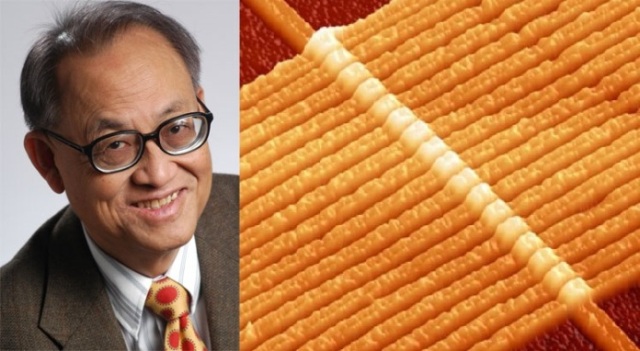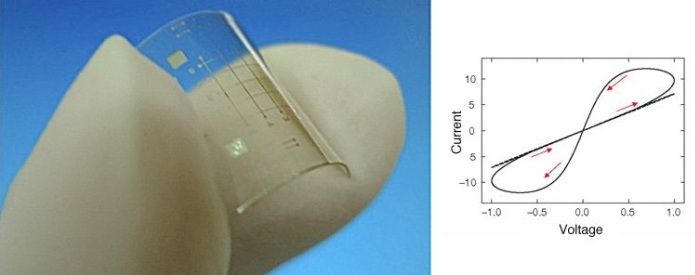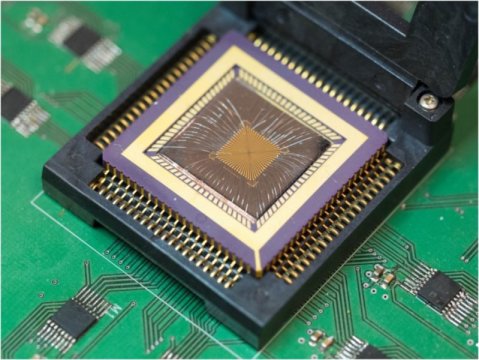Categories: Featured Articles » Interesting electrical news
Number of views: 7406
Comments on the article: 1
What are memristors and where are they applicable?
The name "memristor" comes from two words - memory and resistor. This microelectronic component is a kind of passive component, a resistor, but unlike a conventional resistor, a memristor has a kind of memory.
The bottom line is that the memristor changes its conductivity in accordance with the amount of electric charge flowing through it - depending on the value of the integral over time passing through the current component. A memristor can be described as a two-terminal with a nonlinear CVC, and with a certain hysteresis.

A new word in the world of computing
In the early 70s, the American professor Leon Chua proposed a theoretical model, which described the relationship between the voltage applied to the element and the current integral over time.
For many years, the theory of Professor Chua remained a theory, and only in 2008 a group of scientists from Hewlett-Packard, led by Stanley Williams, created in the laboratory a sample of a memory element that behaved similar to the theoretically described memristor, although it was different from the proposed memristor earlier theoretical model.

The device did not support magnetic flux like an inductor, did not accumulate an electric charge like a capacitor, and did not behave like an ordinary resistor. The fourth component! Its conductive properties changed due to chemical transformations in a two-layer titanium dioxide film 5 nm thick.
The first layer of the film is depleted of oxygen, and therefore, when an electric voltage is applied to this nanoionic device (through platinum electrodes), vacant oxygen sites begin to migrate between the first and second layers, which leads to a change in the resistance of the device.

Already at this stage it is clear that the hysteresis phenomenon allows the use of memristors as memory cells, and in some aspects of electronics they are likely to be able to replace themselves semiconductor transistors.
Broad prospects for the implementation of memristors
In theory, memristor memory can turn out to be faster and more dense than the flash memory common today, and in the form of blocks it can replace the main memory.
Since memristors somehow remember the charge passed through them, in principle, this would allow computers to refuse to load the operating system at all each time the computer is turned on after shutdown, and when turned on, to start work immediately, resuming it from the last saved OS state.
Hewlett-Packard and Hynix have already stated that the technology is basically ready for implementation. Back in 2014, they published their project for the “The Machine” supercomputer, and in 2016 they demonstrated its prototype - with memory based on memristors and fiber-optic communication lines. Commercialization has not yet taken place, but is expected in the coming years.

In principle, memristors are suitable not only for data storage, they can also participate in the processing of information, moreover, the same memory unit can perform both functions.
Hypothetically, in the near future, memristors will help create artificial synapses as part of artificial neural networks, and products can be built on standard microchip equipment. A memristor behaves in a very similar way to a synapse: the larger the signal passes through it, the better it passes the signal in the future.
In general, the prospects for the implementation of memristors are quite wide. Energy-efficient computing systems with dynamic memory with the ability to maintain the current state even after turning off the power - this is a very strong leap forward.

On the horizon, at least, an improved class of integrated circuits in which the advantages of capacitors and inductances (in terms of the ability to maintain their state) will be achieved at the nanoscale. Remote sensing, artificial neuromorphic biological systems, etc.
Given the growing use of cloud computing and the modern scale of Big data, the need for powerful hardware components will only grow, which means that the beginning of the rapid growth of the memristor market is only a matter of time. In addition, if we take into account the prospect (with the introduction of memristors) of increasing productivity with lowering heat generation, it becomes logical that in the near future the difficulties associated with the current complexity of memristors as products will be overcome.
Here are just ten major industry players today: HP Development Company LP, Fujitsu, IBM, Adesto Technologies Corporation, SK Hynix, Crossbar, Rambus, HRL Laboratories LLC and Knowm, Inc.

Artificial brain is just around the corner
Of course, practice is still far away, but the outlines of the idea are already looming. The human cerebral cortex has a synapse density of 1,000,000,000 per square centimeter, but for all its complexity, the synapses in the brain consume extremely low power. Their nonlinear dynamics and ability to preserve memories for decades has always amazed scientists.
The goal of creating an electronic model of the brain with electronic synapse equivalents seemed unattainable. But today, when work on memristor devices is underway, engineers have gained hope to approach reproduction of the architecture of a real brain based on electronics, capable of adapting to the environment.
See also at i.electricianexp.com
:
